
During the Covid crisis, nudging emerged as one of the primary psyops tools used by globalists, governments, NGOs, and “security” (intelligence) forces against us ordinary folk.
Recently, a number of peer-reviewed papers have come to light, exposing just how pervasive and damaging the use of nudges was during Covid-19. They also reveal how nudging, including fear nudging, is being used to control individuals and populations on matters such as health, climate change, meat-eating, tobacco use, alcohol use, weight control, electoral candidates, political campaigns, and more.
The PsyWar Campaign continues to work to control our hearts and minds on all matters of statecraft.
For those that need reminding, nudging is a form of psychological manipulation that is often used in psyops and psywar campaigns.
A nudge is a technique for modifying people’s behavior in a predictable way by influencing people to behave in a desired outcome. Nudging is usually performed covertly, although that is not considered a criterion of the nudge. A nudge can be described as: “any aspects of the choice architecture that predictably alters people’s behavior without forbidding any options or significantly changing their economic incentives.”
Nudging alters the environment, triggering automatic cognitive processes to favor the desired outcome. Nudging makes it more likely that an individual will make a particular choice or behave in a particular way.
Fear nudging involves using nudges that utilize a fear component to drive behavior, opinions, or decision-making. While this is a particularly effective form of nudging, it is absolutely unethical, in my opinion and that of others.
The peer-reviewed papers below document just how effective the fear nudge has become and how globalists and governments alike routinely use this technique to control populations.
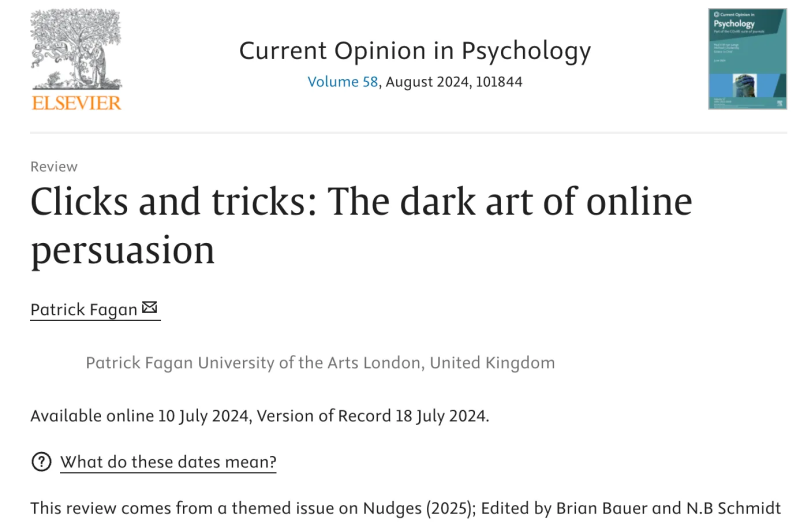
Abstract
Internet users are inundated with attempts to persuade, including digital nudges like defaults, friction, and reinforcement.
When these nudges fail to be transparent, optional, and beneficial, they can become ‘dark patterns,’ categorised here under the acronym FORCES (Frame, Obstruct, Ruse, Compel, Entangle, Seduce).
Elsewhere, psychological principles like negativity bias, the curiosity gap, and fluency are exploited to make social content viral, while more covert tactics including astroturfing, meta-nudging, and inoculation are used to manufacture consensus.
The power of these techniques is set to increase in line with technological advances such as predictive algorithms, generative AI, and virtual reality.
Digital nudges can be used for altruistic purposes including protection against manipulation, but behavioural interventions have mixed effects at best.
Tactics of FORCES (Frame, Obstruct, Ruse, Compel, Entangle, Seduce), which are being used by governments, globalists, and NGOs to control populations.

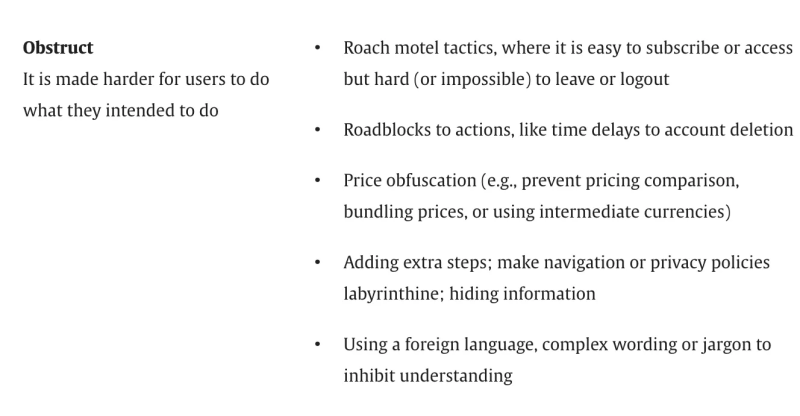
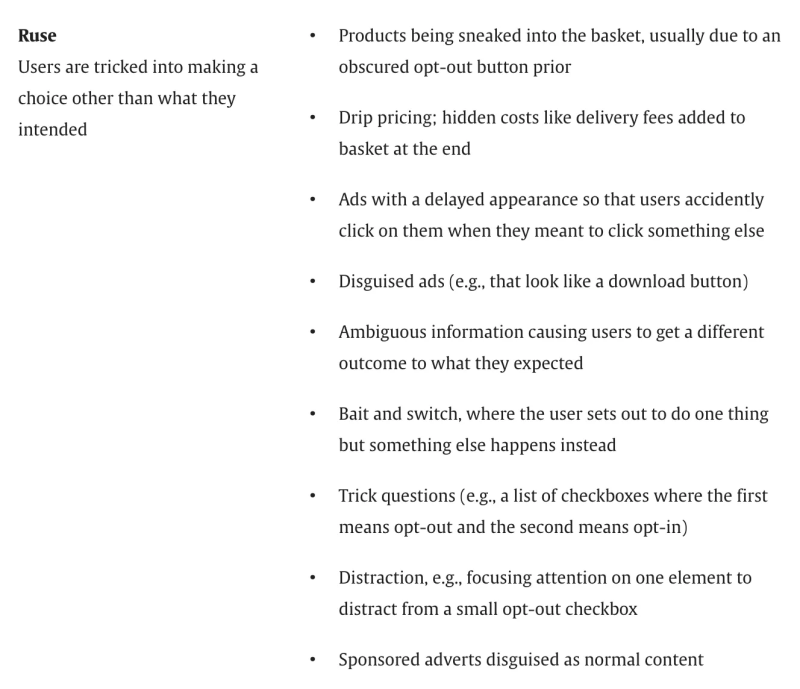

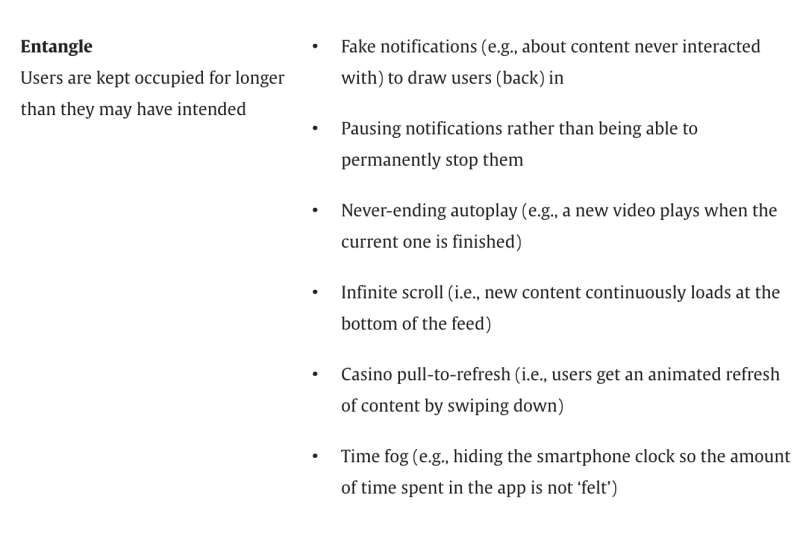
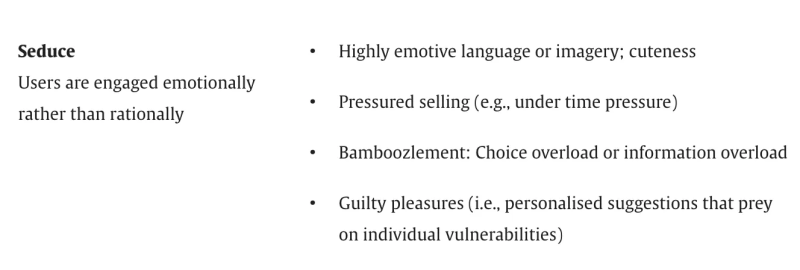
The above graphics are from the paper listed here.

Abstract
Nudging, a controversial technique for modifying people’s behavior in a predictable way, is claimed to preserve freedom of choice while simultaneously influencing it.
Nudging had been largely confined to situations such as promoting healthy eating choices but has been employed in the coronavirus disease 2019 (COVID-19) crisis in a shift towards measures that involve significantly less choice, such as shoves and behavioral prods.
Shared decision making (SDM), a method for direct involvement and autonomy, is an alternative approach to communicate risk.
Predominantly peer-reviewed scientific publications from standard literature databases like PubMed, PsycInfo, and Psyndex were evaluated in a narrative review.
The so-called fear nudges, as well as the dissemination of strongly emotionalizing or moralizing messages can lead to intense psycho-physical stress.
The use of these nudges by specialized units during the COVID-19 pandemic generated a societal atmosphere of fear that precipitated a deterioration of the mental and physical health of the population.
Major recommendations of the German COVID-19 Snapshot Monitoring (COSMO) study, which are based on elements of nudging and coercive measures, do not comply with ethical principles, basic psychological principles, or evidence-based data.
(Shared decision-making) SDM was misused in the COVID-19 crisis, which helped to achieve one-sided goals of governments.
The emphasis on utilitarian thinking is criticized and the unethical behavior of decision makers is explained by both using the concept of moral disengagement and the maturity level of coping strategies.
There should be a return to an open-ended, democratic, and pluralistic scientific debate without using nudges. It is therefore necessary to return to the origins of SDM.
The link to the full paper is here.
The dark nudge is an incredibly effective fear-based tool that governments, political candidates, companies, NGOs, the security state, and others use to control thought and action at the individual and population level. This psyops tool has been, is, and will be utilized against ordinary people.
- A search on “Covid-19 vaccine and hesitancy” in Pubmed pulls up 5,550 results.
- A search on “vaccine and hesitancy” in Pubmed pulls up 7,981 results.
The use of the nudge is a key strategy that many organizations resort to in order to “overcome” vaccine hesitancy.
The peer-reviewed paper below established that some hospitals used psychological torture and even physical discomfort to induce people to accept Covid-19 vaccination.💉
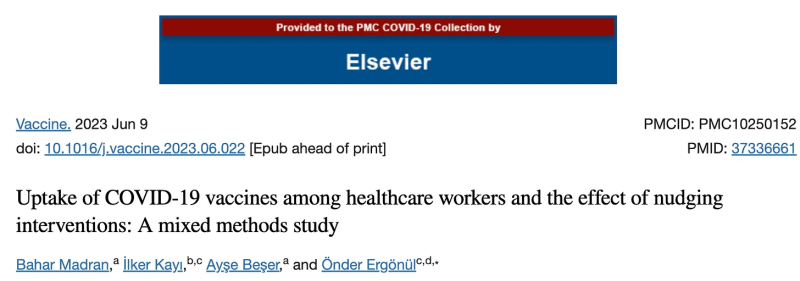
The link to the full paper is here:
From the paper:
Abstract
Methods
We conducted an explanatory sequential designed observational mixed-methods study, including quantitative and qualitative sections consecutively in two different pandemic hospitals between 15 September 2021 and 1 April 2022. The characteristics of vaccinated and unvaccinated (vaccination of healthcare workers) HCWs were compared.
The vaccine hesitancy scales were applied, and the effect of nudging, such as mandatory PCR and education, were evaluated. In-depth interviews were performed to investigate the COVID-19 vaccine hesitancy among HCWs according to Health Belief Model.
Results
…After the mandatory weekly PCR request nudge, 83.33 % (130/156) vaccine-hesitant HCWs were vaccinated, and 8.3 % (13/156) after the small group seminars and mandatory PCR every two days.
Conclusions
The nudging interventions such as mandatory PCR testing and small group seminars helped raise the rate of COVID-19 vaccination; the most effective one is mandatory PCR.
This study took place in Turkey, but a physical intervention (mandatory PCR testing) was performed to coerce people into being vaccinated against their will.
We all know, having lived through the Covid crisis, that this intervention was performed informally throughout the Western world. These scientists just documented what governments and hospitals were doing to people worldwide.
The truth is that “the machine” (the system) did this to us. This goes beyond some small unethical breach, as using PCR testing to harass and cause physical discomfort of the unvaccinated was performed worldwide. Hence, fear nudging that applied physical discomfort and even pain was performed on millions of people worldwide.
The number of peer-reviewed papers documenting and encouraging the use of dark nudges is astounding. Often, these organizations don’t even know the name of this technique – they just do it because it is effective.
It is time that legislative action be considered to control the abuse of this psyops technique that can border on psychological and even physical torture.
Republished from the author’s Substack
Disclaimer
Some of the posts we share are controversial and we do not necessarily agree with them in the whole extend. Sometimes we agree with the content or part of it but we do not agree with the narration or language. Nevertheless we find them somehow interesting, valuable and/or informative or we share them, because we strongly believe in freedom of speech, free press and journalism. We strongly encourage you to have a critical approach to all the content, do your own research and analysis to build your own opinion.
We would be glad to have your feedback.
Source: Brownstone Institute Read the original article here: https://brownstone.org/

